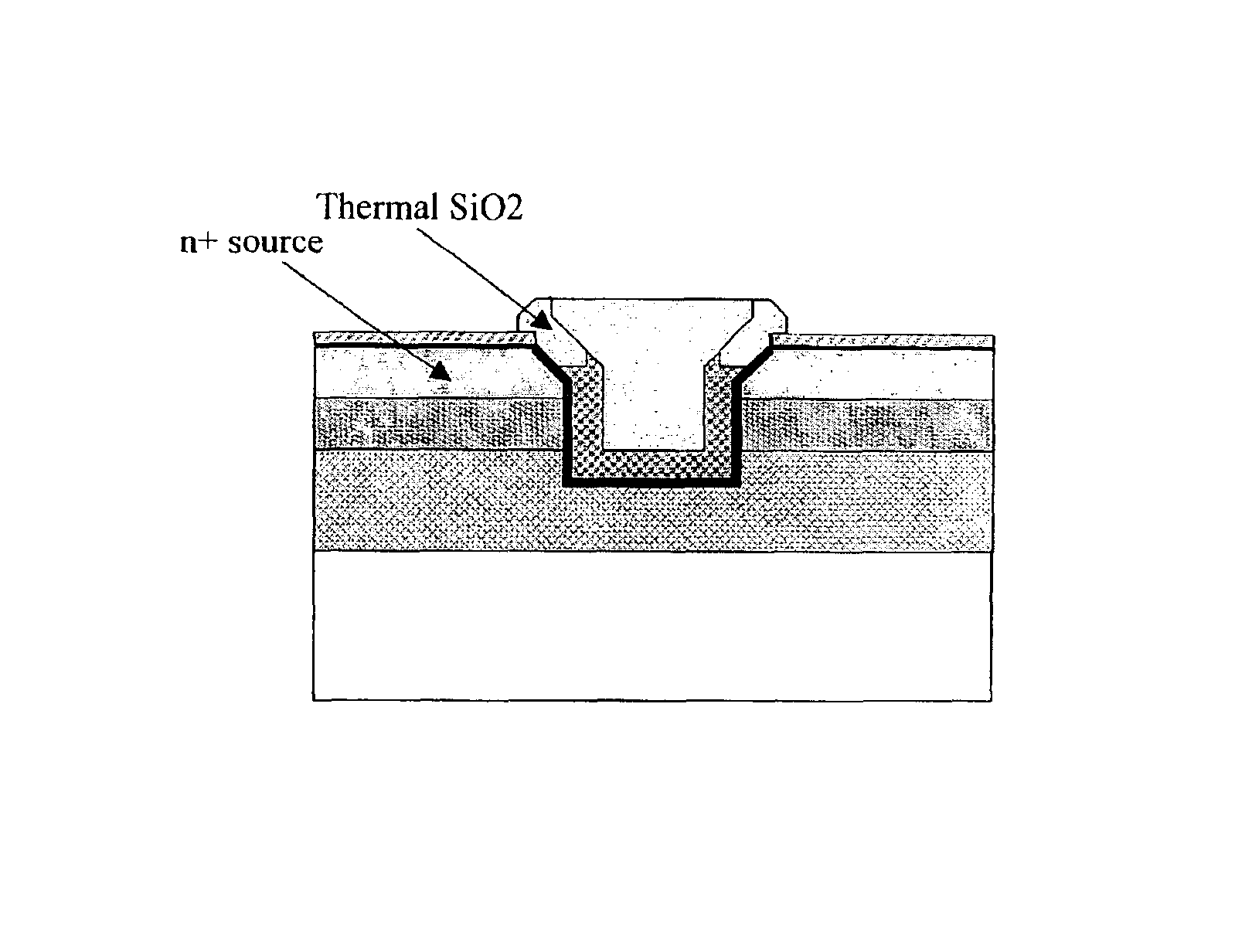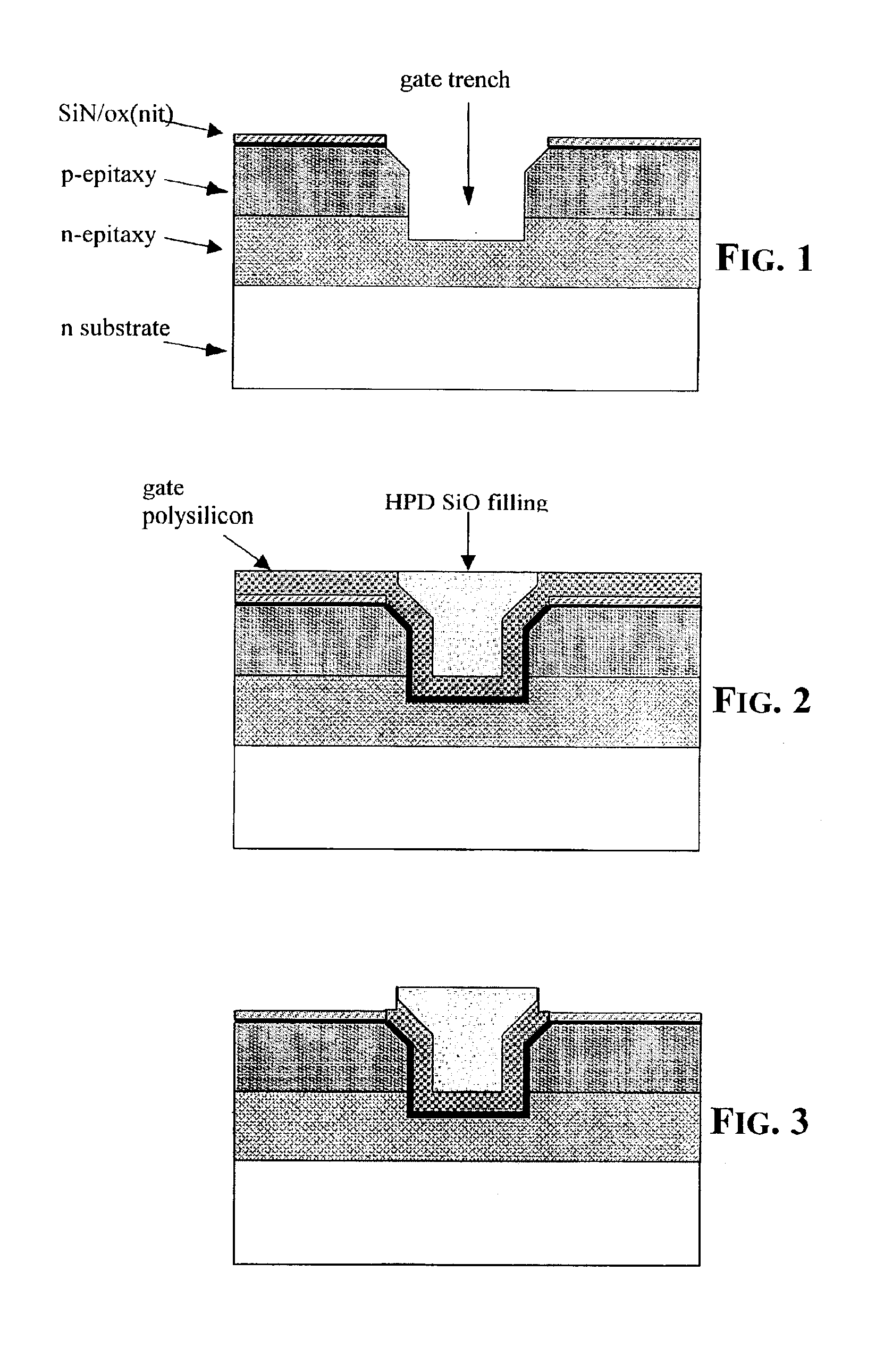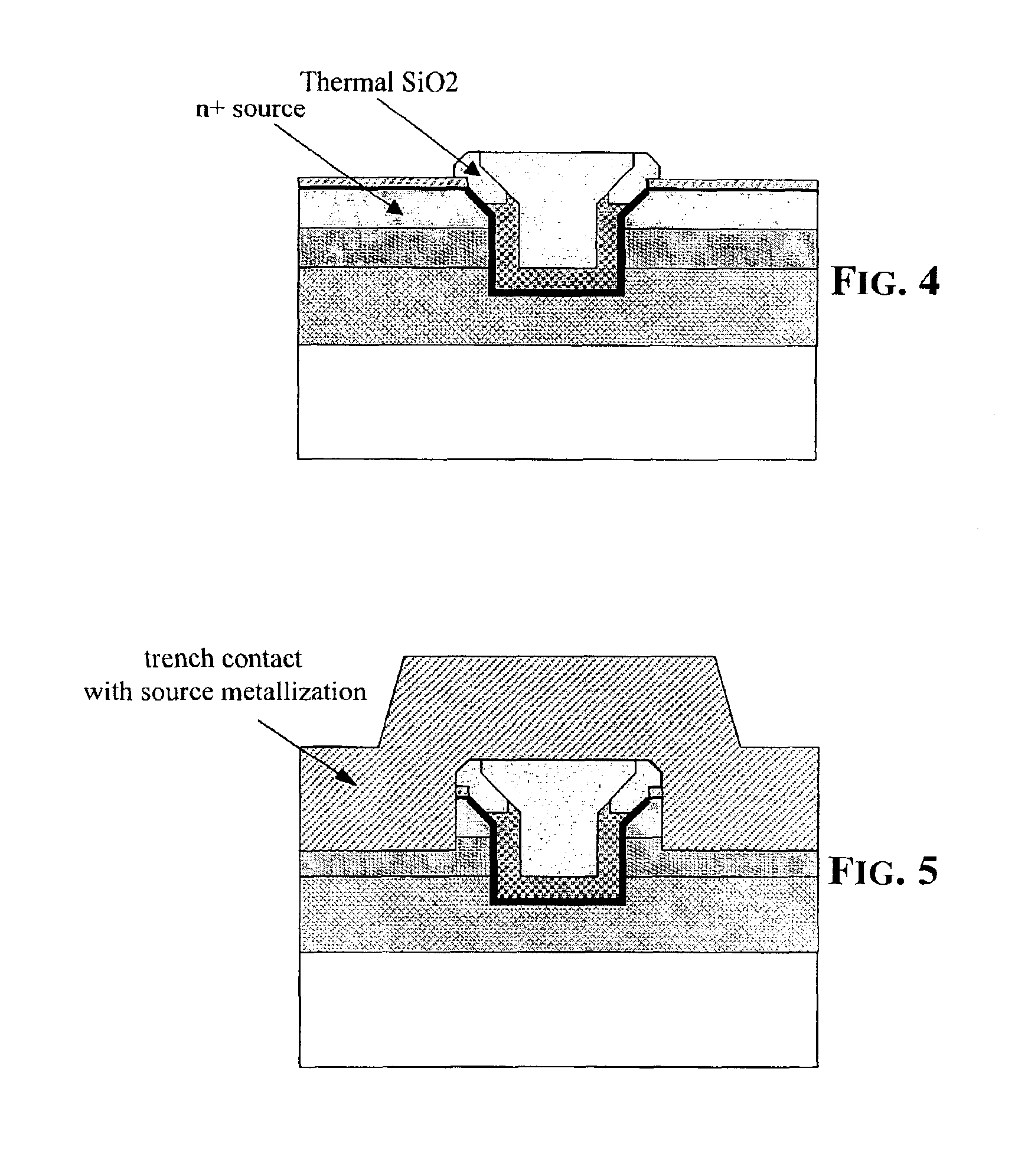Fabrication process of a trench gate power MOS transistor with scaled channel
a technology of power mos transistor and fabrication process, which is applied in the direction of electrical equipment, instruments, static storage, etc., can solve the problems of limited level of performance that can be achieved, limited scale down of lateral dimensions (and packing), and limited design and fabrication of power vdmos transistors with scaled dimensions but with high current capabilities. , to achieve the effect of reducing the resistance of the gate electrode, and less electrical resistivity
- Summary
- Abstract
- Description
- Claims
- Application Information
AI Technical Summary
Benefits of technology
Problems solved by technology
Method used
Image
Examples
first embodiment (
Epitaxial Body):
[0023]A double epitaxial layer is formed: substrate (n+) / epi-Si (n) / epi-Si (p) (body). The edge structure and the active area are defined according to any one of the prior art techniques. The second epitaxial layer will have the desired type of conductivity for the body region of the transistor, opposite to the type of conductivity of the first epitaxial layer.
[0024]A pad oxide or a pad oxide-nitride is grown and a layer of pyrolytic nitride (SiN / ox) is deposited over the surface of the second epitaxial layer, for example, a p-epitaxy. This is preferably carried out by a heat treatment in an oven in presence of oxygen for obtaining an oxide layer (≈10 to 20 nm), and eventually in the presence of nitrogen for obtaining an oxy-nitride layer. This is followed by deposition of a pyrolytic layer Si3N4 (30 to 70 nm) in an oven.
[0025]Gate trench photolithography is performed for forming a definition mask for the trench windows (strips) within the active area. The stack SiN / ...
second embodiment (
Diffused Body):
[0048]An epitaxial layer of a first type of conductivity is formed on a semiconductor silicon mono-crystalline substrate, and the edge structure and the active area are formed according to any technique of the prior art. Photolithography of the gate trenches includes forming a definition mask for the trench strips within the active area, and the silicon is plasma etched.
[0049]The next step includes countersinking the upper part of the trenches. This represents an essential requirement of the process of the invention and any technique suitable to produce the desired countersinking may be used. For example, plasma etching the silicon crystal may be done while controlling the tilt angle to obtain a countersinking of about 50÷100 nm at the rim of the cross section profile of the trench. An appropriate tilt for inclining (beveling) the upper portion of the walls of the trench may be carried out during or at the end of the etching process.
[0050]Growth of the gate dielectric...
PUM
 Login to View More
Login to View More Abstract
Description
Claims
Application Information
 Login to View More
Login to View More - R&D
- Intellectual Property
- Life Sciences
- Materials
- Tech Scout
- Unparalleled Data Quality
- Higher Quality Content
- 60% Fewer Hallucinations
Browse by: Latest US Patents, China's latest patents, Technical Efficacy Thesaurus, Application Domain, Technology Topic, Popular Technical Reports.
© 2025 PatSnap. All rights reserved.Legal|Privacy policy|Modern Slavery Act Transparency Statement|Sitemap|About US| Contact US: help@patsnap.com



